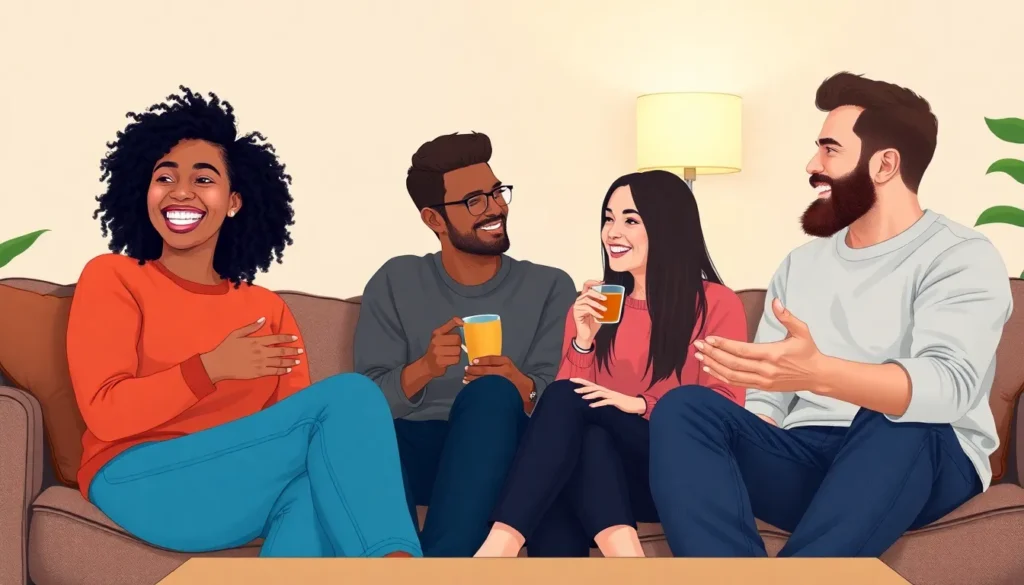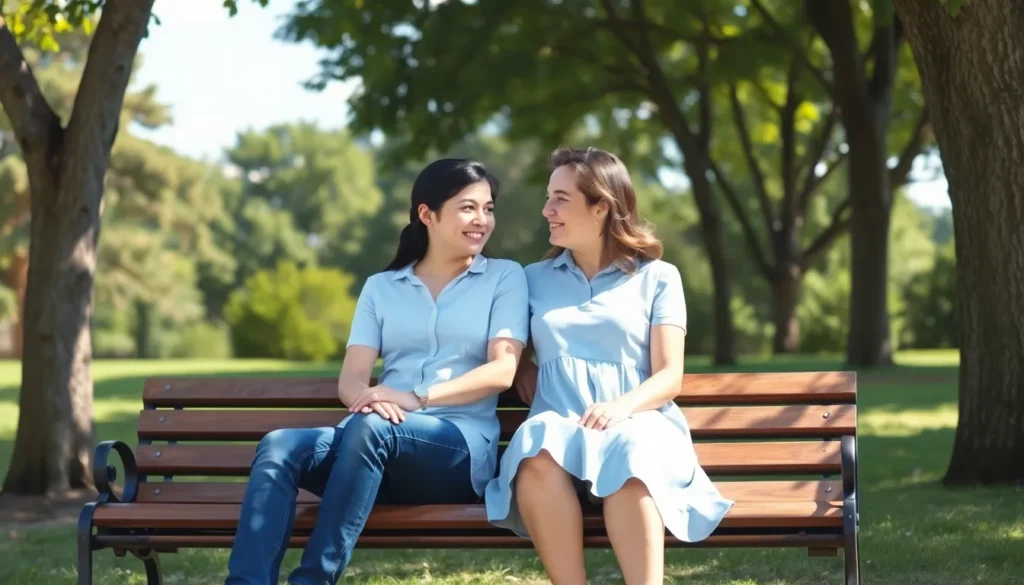Ever felt like you’re in a friendship where you’re the only one showing up? Welcome to the world of one-sided friendships, where the effort is as lopsided as a seesaw with a heavyweight on one end. It’s like being in a relationship with a ghost—you’re doing all the talking while they just float around, never quite engaging.
Table of Contents
ToggleUnderstanding One Sided Friendships
One-sided friendships occur when one person invests significant effort while the other remains distant or uninterested. This dynamic often leads to frustration and emotional drain for the engaged party.
Definition and Characteristics
One-sided friendships involve an imbalance in emotional investment. One individual consistently reaches out, plans activities, and provides support. Characteristics of one-sided friendships include a lack of reciprocation, where the second party rarely initiates contact. Joy and fulfillment often appear absent for the person who contributes more. Trust and vulnerability also diminish, leaving one feeling isolated despite the friendship.
Common Signs of One Sided Friendships
Common signs reveal the lopsided nature of these relationships. Frequent patterns of texting without replies indicate disinterest. Unreturned calls signal a lack of commitment. Additionally, feeling exhausted after interactions suggests one person invests energy while the other drains it. Another sign includes unequal support during tough times, where one friend provides help while the other remains aloof. Recognizing these signs is crucial for maintaining emotional well-being.
Causes of One Sided Friendships

One-sided friendships stem from various factors. Understanding these causes aids in addressing imbalances.
Personal Insecurities
Personal insecurities often play a significant role in one-sided friendships. Individuals may fear rejection or feel unworthy of deeper connections. One person may hesitate to fully engage due to low self-esteem. This lack of confidence can result in reduced emotional availability, making it difficult for them to reciprocate friendship efforts. Vulnerability might seem overwhelming, leading one party to disengage. Consequently, the friend who invests more finds themselves in a frustrating dynamic, as they frequently reach out but receive minimal support in return. Emotional walls may prevent authentic interactions, intensifying the feelings of isolation for the more invested individual.
Different Life Stages
Different life stages frequently contribute to the imbalance in friendships. Friends may experience significant changes like moving, starting new jobs, or entering relationships. These transitions can alter priorities, creating distance between friends. A recent parent may prioritize family, while a single friend might desire social outings. The resulting mismatch can lead to one person feeling neglected while the other navigates a busy life. Even if one party cares, life events can limit their ability to engage, ultimately leaving the more active friend feeling undervalued. Friday night hangouts and casual catch-ups may become infrequent, deepening the sense of emotional detachment for the one left reaching out.
Effects of One Sided Friendships
One-sided friendships can significantly impact emotional health and social connections. Understanding these effects can help individuals maintain healthier relationships.
Emotional Impact
Emotional strain marks one-sided friendships. The invested person often feels unappreciated, leading to feelings of rejection. Lack of reciprocity can create resentment and frustration, especially during challenging times. Persistent efforts without acknowledgment erode self-esteem and trust. Seeking validation becomes a struggle as emotional needs remain unmet. Individuals may develop anxiety about the friendship, worrying about their worth and desirability. While they give freely, the emotional emptiness can overshadow any positive aspects of the relationship.
Social Isolation
Social isolation frequently results from one-sided friendships. The engaged person might feel disconnected from their peer group. Ideal support networks turn into sources of loneliness when conversations remain superficial. Invitations to outings can dwindle as one party pulls away, creating an awkward dynamic. Missing emotional support during pivotal moments leads to deeper feelings of isolation. These friendships, lacking in mutual engagement, often prevent individuals from forming fulfilling connections with others. Friendships that thrive on reciprocity encourage social interaction, while imbalanced ones can confine personal growth and opportunities for meaningful relationships.
Navigating One Sided Friendships
Navigating one-sided friendships requires careful consideration and communication. Many individuals find themselves at a crossroads, weighing the effort they invest against the emotional returns they receive.
Strategies for Communication
Engaging in open dialogue can clarify feelings about the friendship. Listening actively can provide insight into the other person’s perspective. Expressing emotions honestly creates an opportunity for both individuals to understand the friendship’s dynamics better. Setting clear boundaries offers protection against further emotional strain. Asking for reciprocity can establish expectations that enhance the relationship. Evaluating the responses to such discussions helps determine the willingness to invest further in the connection. Communication often acts as a catalyst for change, prompting reflection and adjustments in behavior for a healthier friendship.
Deciding to Let Go
Recognizing when to let go can be empowering. Assessing the level of effort spent against the rewards received often guides the decision. An ongoing pattern of one-sidedness signifies a need to reevaluate the connection. Prioritizing mental health takes precedence, especially if feelings of resentment arise consistently. Considering the potential for personal growth without the burden of imbalance promotes self-advocacy. Acceptance of the situation can pave the way for new connections that offer reciprocity. Ultimately, choosing to move on frees individuals to seek out friendships that nurture and uplift.
One-sided friendships often leave individuals feeling drained and unappreciated. Recognizing the signs and understanding the underlying causes can empower them to make informed choices about their relationships. Open communication and setting boundaries are essential steps toward fostering healthier connections. When the balance of effort is consistently unequal, it may be time to reassess the friendship. Prioritizing emotional well-being can lead to the discovery of more fulfilling relationships that nurture personal growth. Ultimately, letting go of one-sided friendships opens the door to connections that provide joy and reciprocity.








